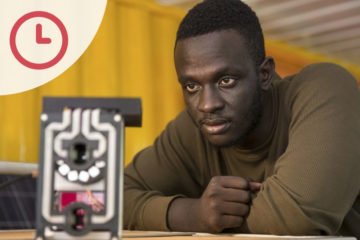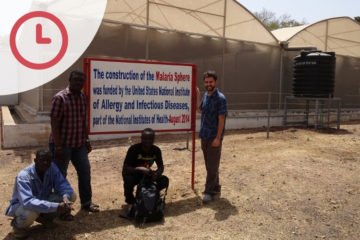Podcast Available on iTunes and Spotify.
Hello, I’m Thomas Locke and this is Five Minutes, the podcast that brings you closer to the malaria experts.
Long-lasting insecticidal bednets, or LLINs for short, are an integral part of the global effort to fight malaria, with the WHO recommending that everyone, all 3.4 billion people, at risk of malaria should have access to one.
But how effective are they? To try and understand how bednets are being used in the field, a team of researchers headed by Paul Krezanoski of the University of California have developed the so-called SmartNet, a remote bednet monitor.
I’m delighted to be joined by Paul now. Paul, thanks for joining me.
You talk in your report about the unreliable mechanisms of measuring bednet usage. How does the SmartNet address that issue?
There are a couple of issues with our current measurement tools for bednet use. The number one issue is that bed net use right now is typically measured in a cross-sectional way, which means we show up and we get a one-time measurement. The most common way that we measure bed net use is by asking people whether they used a bed net the previous night or often, like in the Malaria Indicator Surveys, asking them whether a particular bed net was used the night before. And so the challenges with that are that you’re talking to one individual in the household often and they’re reporting for other people. There is also the challenge of social desirability bias where it’s a very easy thing to say ‘Yes, yes, of course, I used my bed net last night’, especially if a research subject thinks that that’s what the interview is looking for.
Your response to this was to develop a technical solution to the problem. Could you talk me through the technology of the SmartNet, what you’re trying to measure and what that tells you?
The SmartNet is composed of two different components. There is a conductive fabric, like a wire, and those are woven into the sides of the net in a particular pattern. When those patterns touch each other, I can detect a completion of a circuit by using a small electronic microcontroller. Now, that allows us to tell whether the bed net is folded up, which is, in my experience, the most common way that bed nets are stored in between use from night tonight, or whether the bed net is actually unfurled down around the bed. The SmartNet can detect that with pretty good accuracy, or I think what I quote is about 98% accuracy in our lab tests. Essentially, I can detect every time a bed net is unfurled. I do occasionally have some issues with the overlapping of the connective fabric when the bed is folded up. That’s very rare.
You had 10 of these nets to hand out, what demographic of people did you give these nets to?
This study was the first time we had deployed it into sub-Saharan Africa. The way we chose our group was from a research station at the local clinic. It was sort-of a convenient sample. We chose women that either had children or were pregnant themselves. We were trying to focus on high-risk groups and people that we would expect, or would hope, were using bed nets. We chose the first ten people that that came into the clinic that were women and had young children or were pregnant and we asked them if they’d be interested in using the SmartNet in their home. And then we visited them at a later date and did the full study consent and installed the SmartNets at that time.
You monitored bed net usage for over 9000 hours and found that adherence was 85-90% between 9pm and 6am. Was that figure representative of all households or did you find that some households were more compliant to bednet usage than others?
This was a quite adherent group. I would put a caveat here that one of the big questions is whether these objective monitors of bednet use actually changed behaviours – what we call the Hawthorne effect, where being measured changes how you act. The jury’s still out on whether the SmartNets themselves induced people to improve their bed net use so that they adhere to the expectations of the researchers. However, as I say in the paper and what I thought was probably the most surprising finding for me was the heterogeneity in use. There were particular households, for example, that put their bed nets down quite late night, 9:30, 10 o’clock at night. So you can imagine in those groups, that there’s a lot of time in the dusk hours and early evening hours where they’re not getting optimal coverage. Similarly, there are some households that put their bed nets down for a much smaller duration of use. Some had it down for about seven hours, whereas other ones had it down for 13 hours total on average per night. So there seems to be an amount of heterogeneity even within a small sample.
Paul Krezanoski, thanks very much.
Yeah. Thank you for your time.
That was Paul Krezanoski on his SmartNet, a remote bednet monitor tracking and measuring bed net usage in Uganda.


